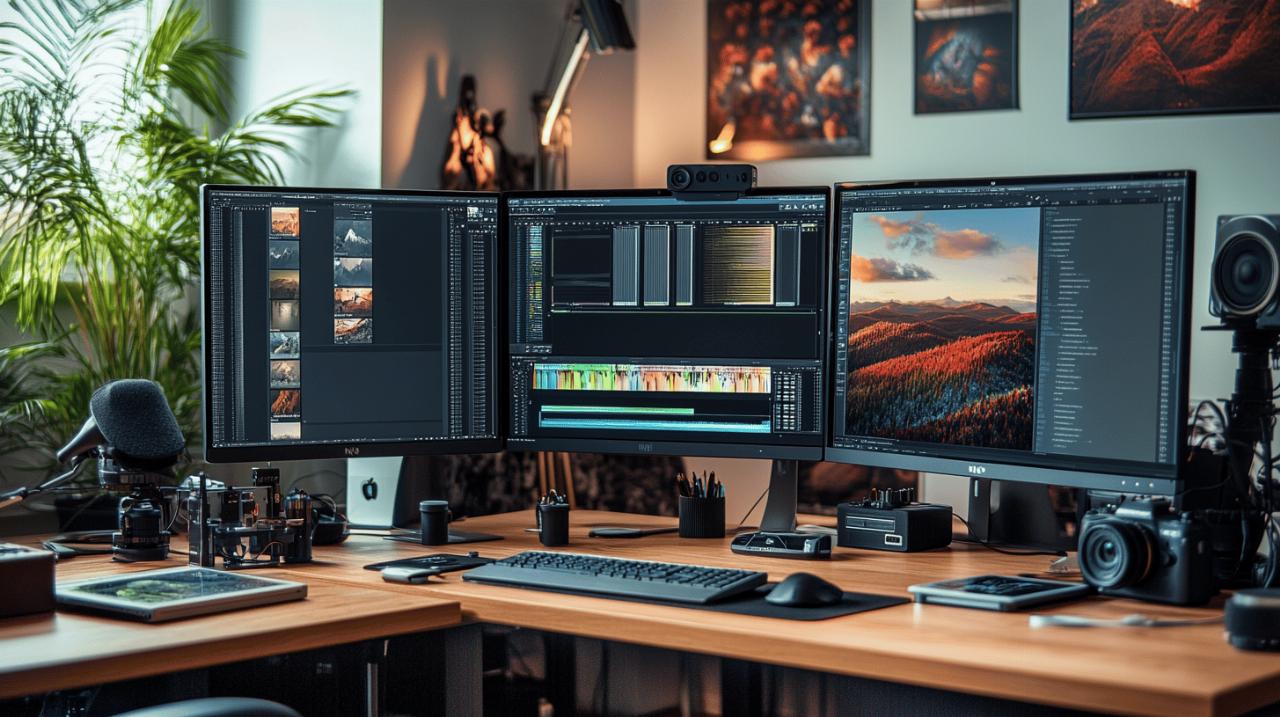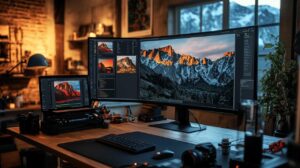The world of digital photography is awash with software claiming to revolutionise your workflow, but few have the heritage and reputation of the DxO Nik Collection. Now in its fifth iteration, this suite of plugins has long been a fixture in the editing arsenal of professionals and enthusiasts alike. However, with any major update comes a fresh set of questions: has DxO truly addressed the persistent control point conundrums that have plagued earlier versions, and do the performance improvements justify the investment for photographers already entrenched in their editing routines?
Overview of the DxO Nik Collection 5 Suite
What's Included in the Nik Collection 5 Package
The DxO Nik Collection 5 arrives as a comprehensive bundle of seven distinct plugins, each tailored to address specific aspects of photographic enhancement. Within this package, photographers will find Color Efex Pro, a powerful tool for creative colour adjustments and filters that can dramatically alter the mood of an image. Silver Efex Pro continues to be the gold standard for black and white conversion, offering an extensive range of tonal controls and film emulations that can turn a mundane colour photograph into a striking monochrome masterpiece.
HDR Efex Pro tackles the challenge of capturing scenes with extreme dynamic range, blending multiple exposures to reveal detail in both highlights and shadows. Viveza stands out as the suite's selective adjustment tool, enabling photographers to make precise colour and tone modifications without the need for intricate layer masking. For those drawn to the nostalgic aesthetic of analogue photography, Analog Efex Pro delivers a treasure trove of vintage film looks and retro effects that can transport digital images back several decades.
Rounding out the collection are Sharpener Pro, which provides targeted sharpening for both creative emphasis and output preparation, and Perspective Efex, designed to correct distortions and manipulate depth of field in ways that can rescue architectural shots or introduce creative miniature effects. Additionally, the suite includes Nik Dfine for noise reduction and ClearView for cutting through atmospheric haze, ensuring that landscape photographers have the tools to deliver crisp, punchy images even in challenging conditions.
Compatibility with Adobe and DxO PhotoLab Software
One of the defining characteristics of the Nik Collection has always been its versatility as a plugin suite. Version 5 maintains compatibility with Adobe Photoshop and Lightroom, allowing seamless integration into established workflows. Photographers using DxO PhotoLab will also find the plugins work smoothly within that ecosystem, and there is support for Affinity Photo for those seeking alternatives to Adobe's subscription model.
The suite can also function as a standalone application, which provides flexibility for those who prefer to work outside their primary editing environment or who want to quickly process images without launching a heavier application. The Photoshop integration has seen particular attention in recent updates, with a redesigned panel that streamlines access to the various plugins and improved masking workflows that make it easier to shuttle adjustments between Nik tools and Photoshop's native layers.
However, there is a significant caveat that has caused considerable frustration among long-time users. Nik Collection 5 suffers from a critical backwards compatibility issue with Smart Objects created in earlier versions. If you have been using Nik Collection 4 or earlier and have built up a library of images with edits saved as Smart Objects, upgrading to version 5 will render those previous adjustments inaccessible. Adobe Photoshop will present the error message stating that the filter is not available or cannot be applied to the document, effectively orphaning any work done with older versions of Color Efex Pro, Analog Efex Pro, Viveza, or Silver Efex Pro.
This backward compatibility failure has led some photographers, including vocal community members, to revert to Nik Collection 3 in order to preserve their existing work. DxO support has acknowledged the issue but has indicated that converting Smart Objects from older versions is not currently feasible. The company has suggested either completing work in the older versions before upgrading or converting corrections to presets that can be reapplied in the newest version, though this workaround is far from ideal and represents a significant inconvenience for those with extensive back catalogues.
Testing the Control Points: Improvements and Lingering Issues
How control points function in version 5
Control points, or U-Points as they are sometimes known, have always been the signature feature of the Nik Collection. These tools allow for localised adjustments without the need for complex selection or masking, making it possible to brighten a specific area, alter colour saturation, or adjust contrast simply by placing a point and defining its radius of influence. The elegance of this approach lies in its simplicity: drop a point, set the size, and tweak the sliders.
In Nik Collection 5, the fundamental concept remains unchanged, but the interface has undergone modifications that have divided opinion among users. Rather than displaying the adjustment sliders directly beneath each control point as in earlier versions, the controls are now consolidated in a right-hand panel. This change was presumably made to reduce visual clutter on the image canvas, but it has introduced a new set of usability challenges.
For photographers accustomed to the old workflow, the transition can feel counterproductive. The immediacy of having sliders attached to each control point meant that adjustments could be made quickly and intuitively, with a clear visual connection between the point and its effect. Moving these controls to a separate panel requires users to shift their attention away from the image, which can disrupt the creative flow and make it harder to judge the impact of subtle adjustments.
Moreover, some users have reported difficulties with the control point interface itself. The white button used to resize the area of influence has become harder to select and manipulate, and there have been instances where the actual controls fail to appear at all, leaving photographers staring at a control point they can place and resize but not adjust. These issues suggest that while DxO has attempted to modernise the interface, the execution has not been entirely successful, and some fundamental usability concerns remain unresolved.
Real-world performance and troubleshooting tips
In practical use, the performance of control points in Nik Collection 5 is something of a mixed bag. On systems that meet or exceed the recommended specifications, the responsiveness is generally acceptable, with adjustments applying in near real-time and the interface remaining fluid even with multiple control points active. However, there are reports of sluggishness and stuttering, particularly when working with high-resolution images or applying multiple plugins in sequence.
For those encountering control point issues, there are a few troubleshooting steps worth trying. Ensuring that your graphics drivers are up to date can resolve some rendering problems, and verifying that your system meets the minimum requirements is essential. On Windows, Nik Collection 5 requires at least an Intel Core or AMD Ryzen processor with four cores, eight gigabytes of RAM, ten gigabytes of disk space, and Windows 10 or 11. Mac users need eight gigabytes of RAM, ten gigabytes of disk space, and macOS 14 Sonoma at a minimum.
If control point adjustments are not appearing in the expected location, check the right-hand panel to see if the controls have been relocated there. This change is not a bug but a deliberate design decision, albeit one that has not been universally welcomed. For those who miss the old drop-down panel sliders, there is unfortunately no official way to revert to that interface within version 5, though some users have experimented with running older versions alongside the new installation, despite DxO advising against this practice due to the risk of unexpected issues in Photoshop.
Another persistent problem relates to display scaling on high-resolution monitors. Photographers using 4K displays with Windows scaling set to 200 percent have reported that the Nik Collection interface and preview images appear either far too small or excessively large, rendering the software difficult to use. This issue has been ongoing for over three years, with some modules handling scaling correctly while others display tiny, unreadable text. DxO support has typically advised users to try newer versions, but a permanent fix has been elusive. There have been indications that a beta version with improved scaling has been distributed, so a resolution may be forthcoming, but for now, this remains a significant annoyance for those working on modern, high-resolution displays.
Performance analysis: speed, stability, and system requirements
Evaluating processing times and workflow efficiency
 Performance in photo editing software is not solely about raw processing speed; it also encompasses responsiveness, stability, and how well the tools integrate into an existing workflow. Nik Collection 5 has made strides in some areas while stumbling in others. The introduction of faster Quick Export options is a welcome improvement, allowing photographers to save their edited images more swiftly and move on to the next task without unnecessary delays.
Performance in photo editing software is not solely about raw processing speed; it also encompasses responsiveness, stability, and how well the tools integrate into an existing workflow. Nik Collection 5 has made strides in some areas while stumbling in others. The introduction of faster Quick Export options is a welcome improvement, allowing photographers to save their edited images more swiftly and move on to the next task without unnecessary delays.
The redesigned Photoshop panel is another step forward, offering a more streamlined interface for launching the various plugins and managing layers. The improved masking workflow between Nik and Photoshop allows for more sophisticated editing strategies, with the ability to edit Nik adjustments as new layers providing greater flexibility and non-destructive editing capabilities. These enhancements should, in theory, make the suite a more efficient component of a professional workflow.
In practice, however, the experience is not uniformly smooth. Processing times can vary significantly depending on the complexity of the adjustment and the specifications of the machine. High-resolution images with multiple control points or complex HDR merges can take longer to process than one might hope, and there are occasional stability issues that result in crashes or frozen interfaces. These hiccups are not constant, but they occur frequently enough to be a source of frustration, particularly when working under deadline pressure.
Addressing common performance hiccups and solutions
For photographers experiencing performance problems, there are several strategies that can help mitigate the issues. First, ensure that the software is installed on a fast solid-state drive rather than a traditional hard disk, as this can significantly reduce loading times and improve overall responsiveness. Allocating more RAM to Photoshop and ensuring that other resource-intensive applications are closed during editing sessions can also free up system resources and reduce the likelihood of slowdowns.
Updating to the latest version of the Nik Collection is advisable, as DxO periodically releases patches and updates that address known bugs and improve stability. However, as noted earlier, upgrading to version 5 comes with the risk of losing access to older Smart Object adjustments, so it is crucial to weigh the benefits of the latest features against the potential inconvenience of having to rework previous edits.
For those dealing with the display scaling issues on 4K monitors, adjusting the Windows scaling settings or running the software at a lower resolution may provide a temporary workaround, though this is far from ideal. Some users have reported success by manually adjusting the DPI settings for the application, though this requires delving into system settings and may not work consistently across all modules.
Stability can also be improved by resetting preferences and clearing caches, which can resolve issues caused by corrupted settings files. If crashes persist, checking the event logs for error messages can provide clues as to the underlying cause, and reaching out to DxO support with this information can sometimes result in a targeted solution or workaround.
Is the dxo nik collection 5 worth your investment?
Comparing value against modern editing alternatives
The photography software market is more competitive than ever, with powerful alternatives emerging from both established players and nimble newcomers. Adobe's own suite of tools has expanded considerably, with Lightroom offering increasingly sophisticated local adjustment capabilities and Photoshop integrating machine learning-driven features that can achieve results once only possible with third-party plugins. Affinity Photo has also matured into a formidable competitor, offering a one-time purchase model that is attractive to those wary of subscriptions.
Against this backdrop, the DxO Nik Collection 5 must justify its price tag of approximately one hundred and sixty pounds for a new purchase or ninety pounds for an upgrade from a previous version. A discount code can bring the price down by fifteen percent, but even with that reduction, this is a significant investment. The question then becomes whether the unique capabilities of the Nik Collection warrant the expense when many of the same effects can be approximated using other tools.
The answer depends largely on your workflow and creative preferences. The control point system, despite its interface quirks, remains one of the most intuitive methods for making localised adjustments, particularly for those who find layer masking tedious or unintuitive. The film emulations in Analog Efex Pro are among the most convincing available, and Silver Efex Pro continues to be a benchmark for black and white conversion, offering a depth of control that rivals dedicated monochrome software.
Who benefits most from this plugin suite
The DxO Nik Collection 5 is best suited to photographers who have specific needs that align with the strengths of the suite. Portrait and wedding photographers who rely on selective adjustments to refine skin tones, manage lighting, and add creative effects will find the control points invaluable. Landscape photographers who need to cut through haze, adjust colour balance selectively, and sharpen specific areas will appreciate the specialised tools available across the various plugins.
Those with a passion for black and white photography will find Silver Efex Pro alone worth the price of admission, as its combination of presets, grain controls, and tonal adjustments provides a level of creative freedom that is difficult to match elsewhere. Similarly, photographers who enjoy experimenting with vintage looks and film aesthetics will find Analog Efex Pro a rich source of inspiration and creative possibility.
However, for photographers who primarily work with global adjustments and who are comfortable with layer-based workflows in Photoshop or Affinity Photo, the Nik Collection may represent an unnecessary expense. The backwards compatibility issues are also a significant concern for anyone with an extensive library of previous work, as the inability to access older Smart Object adjustments could necessitate maintaining multiple versions of the software or accepting the loss of editing flexibility.
Ultimately, the DxO Nik Collection 5 is a capable suite with a storied history and some genuinely useful tools. The control point technology remains a compelling feature, and the range of creative options on offer is impressive. However, the software is not without its flaws. The interface changes have not universally improved the user experience, performance can be inconsistent, and the backwards compatibility failure is a serious misstep that undermines confidence in the upgrade path. For those who are already invested in the Nik ecosystem and who rely on its specific capabilities, the upgrade may still be worthwhile, but for newcomers or those on the fence, it is worth carefully considering whether the benefits outweigh the compromises.





